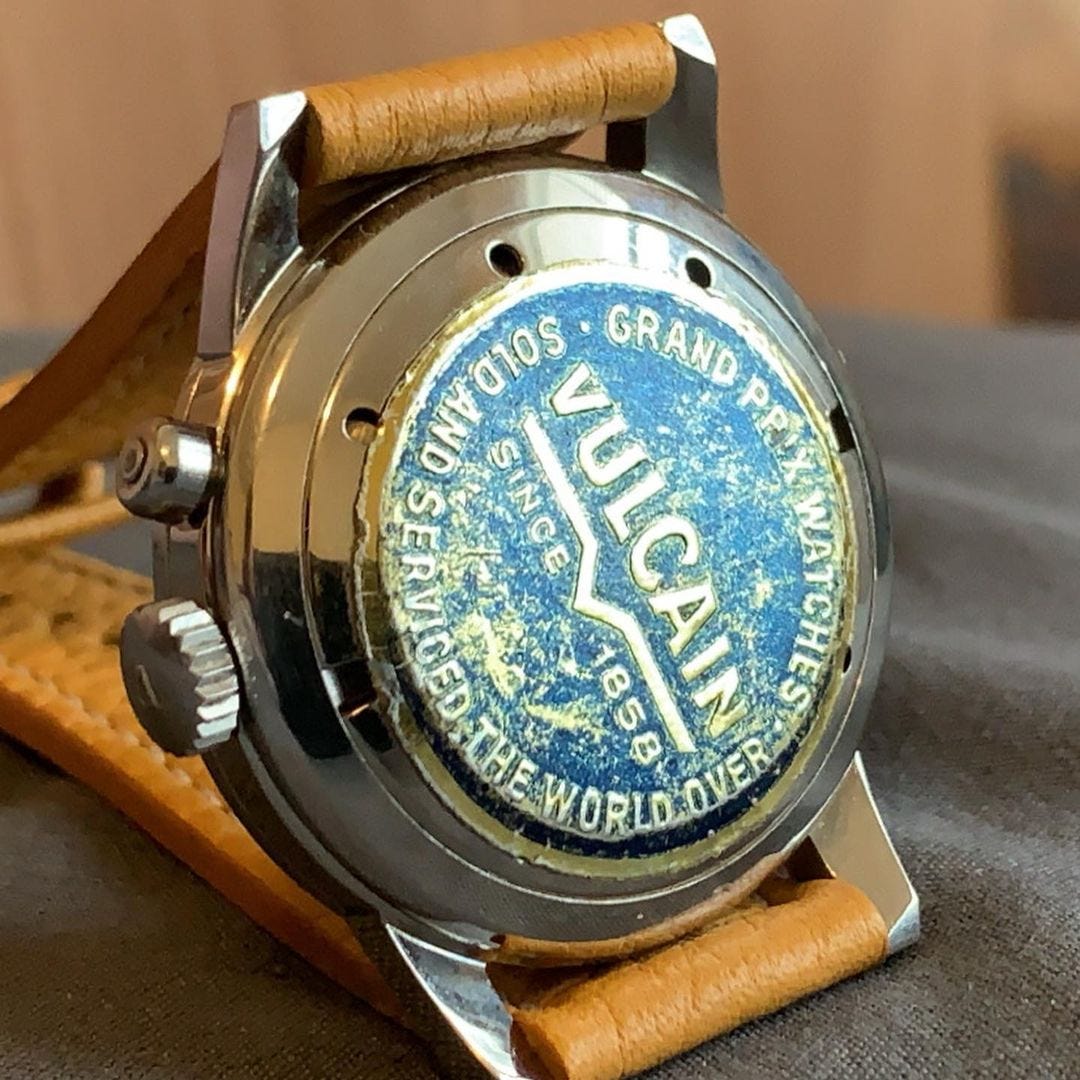Rescapement is a weekly newsletter about watches. To get it delivered straight to your inbox every weekend, subscribe now:

By Charlie Dunne
The array of nifty things to geek out over within watches is seemingly endless. These can come in the form of an original strap, period-correct buckles or bracelets, hang tags, or the most adorned, original box and papers. But perhaps the most impractical (and unimpressive) of all is the caseback sticker.
While it’s fair to assume that most collectors wouldn’t turn their nose up to an immaculately preserved watch, the caseback sticker is really one of those attributes that doesn’t make a watch any more impressive. Some collectors may even be faced with the internal struggle of preserving the sticker at the cost of not wearing the watch. Quite frankly, it seems much easier to relegate a watch to the drawer as opposed to checking the forecast before slapping the watch to the wrist. Or even worse, putting some protective adhesive layer over the sticker. Where is the fun in that? A sticker to protect a sticker?
Although some may find the protective coating on their casebacks to be a worthwhile measure for military or personal engravings, the application on top of a caseback sticker will most likely expedite its deterioration. So for those eager for the subtle flex via flipping the watch over, hold off on that urge.
The hidden truth
In some case[back]s, the sticker may conceal information that is pertinent to your watch. For example, many vintage watches — like the early 1960s Cricket above — have their reference number imprinted on the caseback (along with other information like patent or serial numbers). Unfortunately, far too often this information is slowly worn away from wear or sinfully polished off. Sometimes, casebacks are swapped amongst models. To take the Cricket as an example, there were dozens of variations, even with different case shapes, that featured the same screw-down caseback.
Shy of peeling it off, or sliding in the DMs of other collectors with the same dial configuration, one is left stuck wondering what details are hidden below the foiled overlay. Only time and perspiration will tell.
The blank canvas
Heuer is one manufacturer that would feature a blank section on the sticker for its reference numbers, relying on the retailers to add details during the sales process. According to Jeff Stein of On The Dash, they began to appear on wristwatches (predominantly chronographs) in the mid-1960s.

“Perhaps it's just my imagination, but it seems like we see them on some of the earlier stopwatches and dashboard timers, likely from the mid-1950s. The 1970s is when the practice became more consistent,” Stein said. However, not all stickers are indicative of the watch being NOS (new old stock). “There are definitely supplies of stickers that are circulating in the market. I don't believe that most collectors attribute much value to the stickers; there are just too many of them floating around, and when we see fresh stickers on average/ordinary watches, they don’t add much value.”
Often these stickers weren’t necessarily filled in and can be found absent of any information. General fading of the sticker is to be expected. In the instance such as on the Heuer Monaco above, it is worth checking for subtle details such as the original sunburst finishing on the case. In this instance, the NSA bracelet that accompanied it shows no signs of stretch, giving more validity to the likelihood of it being original to the watch.
When it comes to what collectors are looking for, NOS is not necessarily the pinnacle according to Stein. “In recent years, I believe that most collectors are moving toward ‘near mint’ with a good story, rather than the true NOS watches. With NOS, there is always the concern that the watch has been put together from parts. Most collectors would probably prefer an honest watch, with good provenance, even if it has the occasional scratch or nick. People want to know that Heuer made the watch, not someone who happened to have access to parts in the year 2021.”
The random
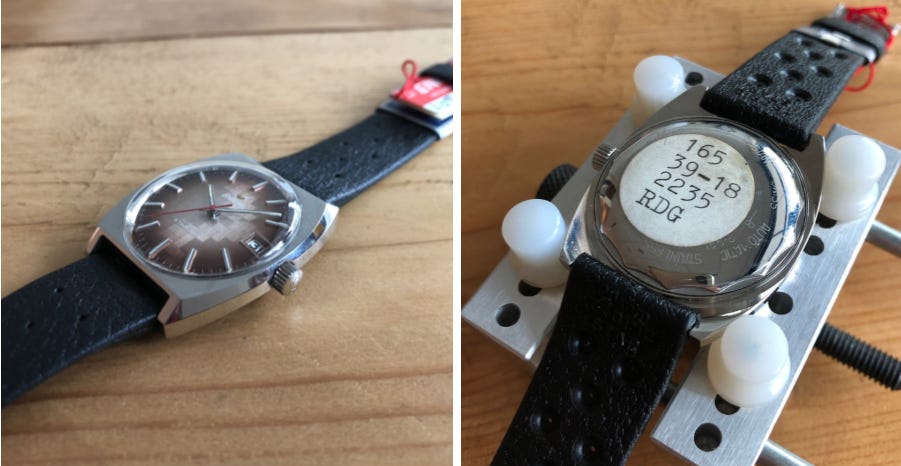
By the 1960s Enicar was a large manufacturer that developed a strong focus on branding. Both logo and numerical product code stickers were applied at the Lengnau manufacturer before they were sent to retailers. Whether it was for their high-grade sports models or more affordable product lines, such as the Star Jewel, there were either Saturn-themed stickies on the back or the plain product code.
When asked to elaborate on the million-dollar question, author and Enicar expert Martijn van der Ven summed it up quite simply. “The stickers were either metal-like embossed with a logo, or flat paper with a logo or purple seal. The tags were blanks so that way a dealer could pin down the price and reference number. The numerical IDs were stamped into the casebacks.”
The consistent
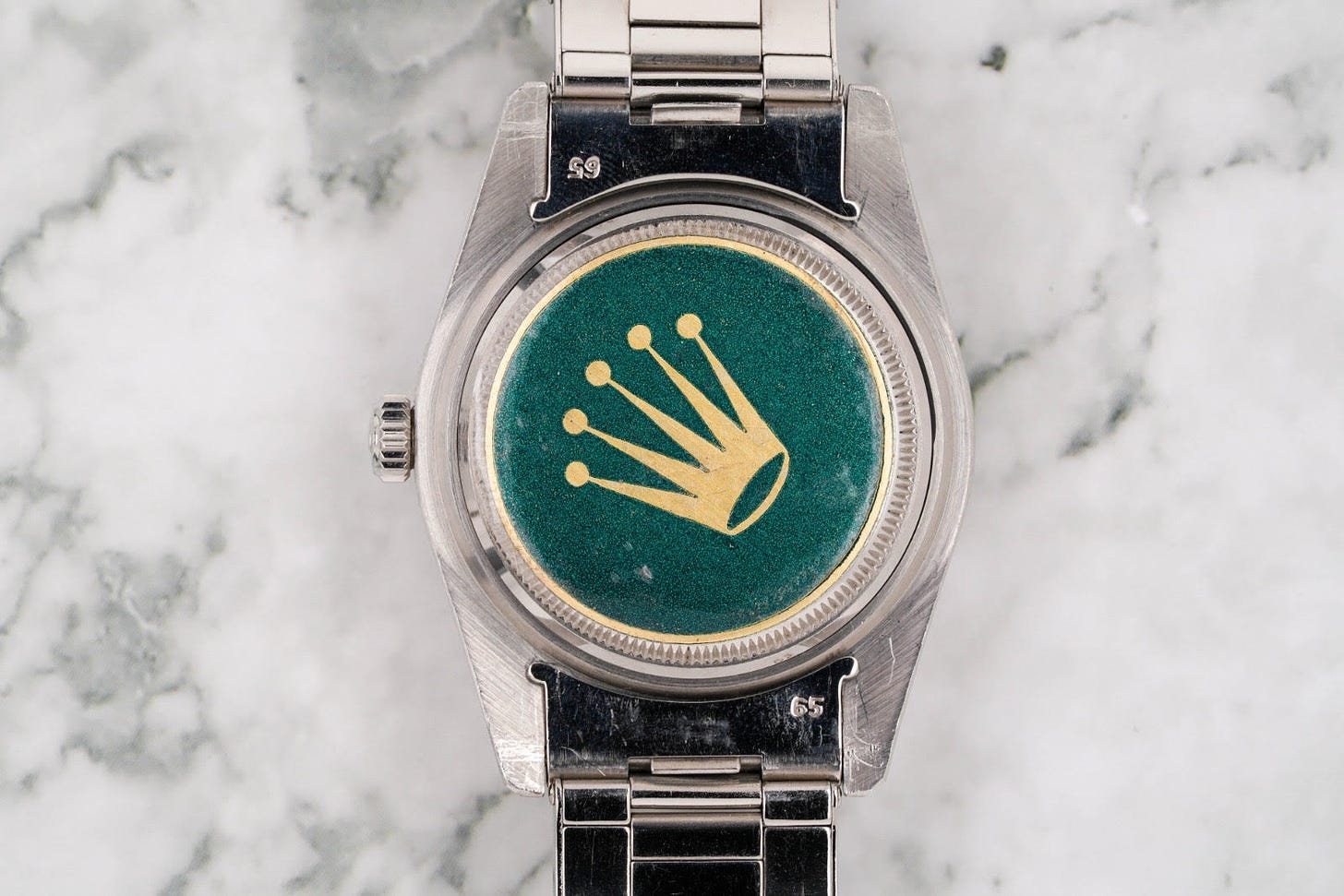
Some brands, such as Tudor and Rolex, not only have much more scholarship, but also a more straightforward approach. The manufacturer would in some instances indicate the reference number and metal before the distribution process, which seems to be consistent amongst brands that have a higher production volume.
As far as on a transactional level, Miami-based vintage dealer Adam Golden of Menta Watches shared some insights. “More often, the caseback sticker doesn’t do much for collectors other than being a nice bonus. While it can be a selling point, it is generally hard to quantify a premium.” When asked whether there were any recent instances that stood out, he cited a Rolex GMT-Master ref. 6542. “Other than this example, I’ve never seen a full Rolex caseback sticker in its true form on a 6542. It shows no signs of being chewed off or worn at all. This one came by way of South America, and when I saw it, it was clear no one had assembled it.”

In regard to modern Rolex models, Golden concedes that the rules are a bit different. “The authorized dealers nowadays take the caseback, case profile, and bracelet stickers off on-site. These show that the watch is truly brand new. I have seen instances where modern Rolex watches with stickers have increased the trading price, as well as desirability.”
But stickers aren’t always necessarily a good sign. When it comes to service stickers, his reaction tends to be one of concern. “What did they butcher today?!?!”, his anxious response to evidence of it being in the possession of Rolex’s service centers. “I’d rather not see that. It’s not often a Rolex can escape unscathed from that place.”
The purpose-based #AlwaysLeaveTheCasebackSticker

While most often these covered casebacks really should have been torn off long ago, there are some that serve a purpose.
“I can't think of other purpose-based stickers, but there are several versions of stickers showing the Indianapolis Motor Speedway conversion table (seconds per lap converted into miles per hour) that are really nice. When you see this sticker on a timing board, with provenance to one of the teams that competed in the Indianapolis 500 in the 1960s, that is a very special item,” Stein said. As far as serving the tools beyond the days on the track, Stein admits that it checks the boxes of historic and more importantly sentimental value. “I have one of these timing boards, with this IMS sticker, which makes this board a special item. I have been able to connect the timing board to a specific team that raced at Indy in the mid-1960s, so that's a nice set.“ Stein shows off a similar timing board and sticker in his Hodinkee Talking Watches episode (link here to the exact timestamp).
Some stand-out stickies

So at the end of the day, is there a superior school of thought when it comes to watches with their caseback stickers? Stein offered some noteworthy points to the counterargument. “I believe that these types of ephemera can add value to a watch. In the world of vintage Heuer chronographs, the ‘full set’ is not as ‘full’ as with some other brands; in other words, we don't see the same types of papers as with some other brands. But having the original box, the instruction booklet and the store receipt is a big plus for a vintage Heuer chronograph. Again, I put the sticker pretty low on the list, as they will deteriorate if left on while the watch is worn. Basically, anything that connects the watch to the moment when it was sold, even a story from the original owner or their family, will add value.”
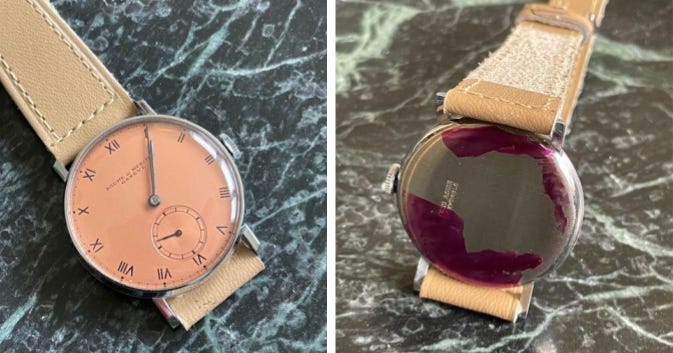
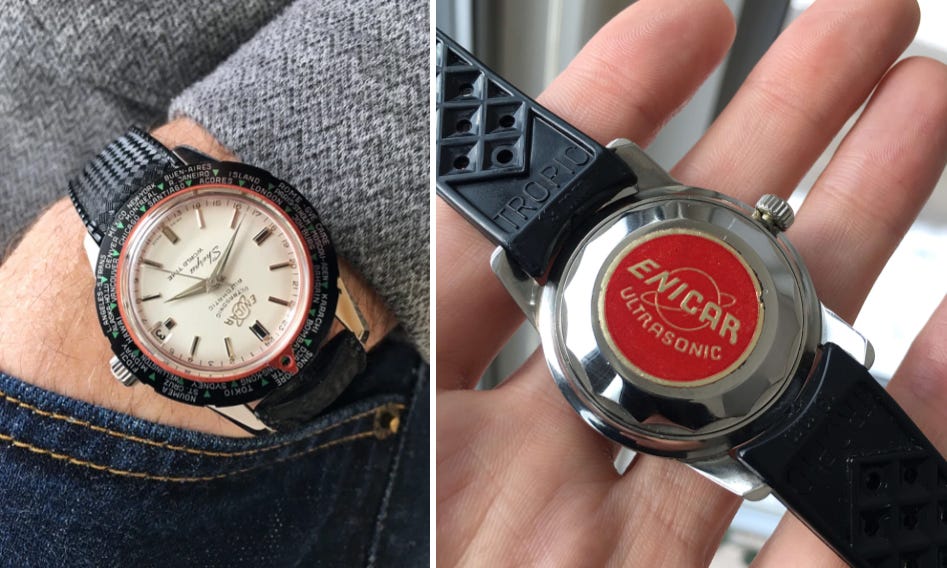
As far as the sticker inhibiting someone from wearing the watch, it’s a bit irrational to purchase something and be overly concerned about such a trivial aspect (writing about such an important topic on the other hand is perfectly sensible). While exploring the topic, Tropical Storm Elsa had just touched down in my state of Florida. Venturing out to the grocery store, I noticed it was overcast and there was a chance of light rain projected at some point in the afternoon. Rather than swapping out my Cricket, I decided to be adventurous on the short excursion. I mean, the “water protected” case is tough enough to leave the house with.
Perhaps I’d think twice if we were talking about torrential downpour, but a bit of humidity is not going to ruin the watch. Quite frankly, I have more of a chance of “damaging” it by maneuvering my cart through the aisles at Publix. The watches are meant to be enjoyed, and when one starts getting carried away with such unimportant aspects as the intact sticker, it might be worth re-evaluating if it is worth holding onto. Besides, when there is information you’re eager to confirm, what real harm could come from the situation?
Special thanks to the following individuals: Adam Golden of Menta Watches. We encourage everyone to check out his YouTube channel for a behind the scenes look at selling vintage watches. Our friend Martijin van der Ven of Enicar.org. His 2nd edition of ‘Time For A Change: Discovering Vintage Enicar’ is currently available with only 20% of the inventory remaining. It’s definitely wise to support this independent publication. Jeff Stein of On The Dash for lending his expertise on Heuer and the current outlook for collectors. His recent coverage of 2021 auction highlights, as well as countless other articles make the site the one-stop shop for those looking to discover the Heuer universe.
Rescapement is an independent weekly newsletter about watches, mostly vintage. Subscribe now to get it delivered to your inbox every Sunday.





